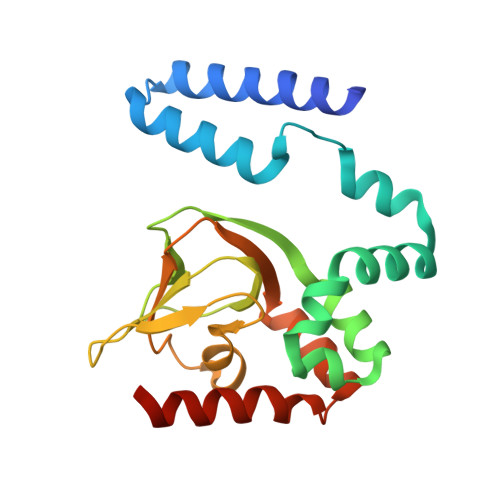Mapping the structure and conformational movements of proteins with transition metal ion FRET.
Taraska, J.W., Puljung, M.C., Olivier, N.B., Flynn, G.E., Zagotta, W.N.(2009) Nat Methods 6: 532-537
- PubMed: 19525958
- DOI: https://doi.org/10.1038/nmeth.1341
- Primary Citation of Related Structures:
3ETQ, 3FFQ - PubMed Abstract:
Visualizing conformational dynamics in proteins has been difficult, and the atomic-scale motions responsible for the behavior of most allosteric proteins are unknown. Here we report that fluorescence resonance energy transfer (FRET) between a small fluorescent dye and a nickel ion bound to a dihistidine motif can be used to monitor small structural rearrangements in proteins. This method provides several key advantages over classical FRET, including the ability to measure the dynamics of close-range interactions, the use of small probes with short linkers, a low orientation dependence, and the ability to add and remove unique tunable acceptors. We used this 'transition metal ion FRET' approach along with X-ray crystallography to determine the structural changes of the gating ring of the mouse hyperpolarization-activated cyclic nucleotide-regulated ion channel HCN2. Our results suggest a general model for the conformational switch in the cyclic nucleotide-binding site of cyclic nucleotide-regulated ion channels.
Organizational Affiliation:
Department of Physiology and Biophysics, Howard Hughes Medical Institute, University of Washington, Seattle, Washington, USA.















